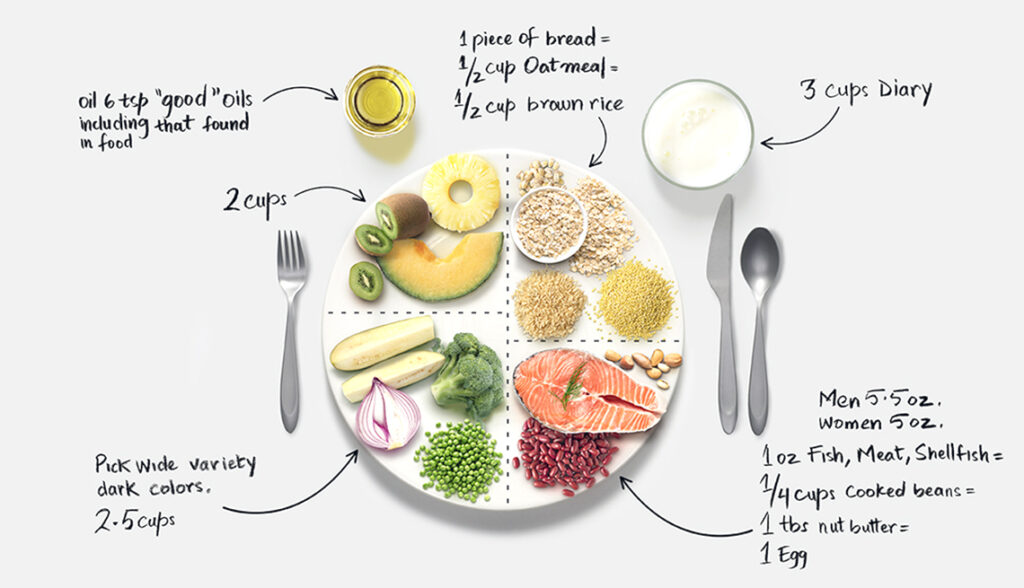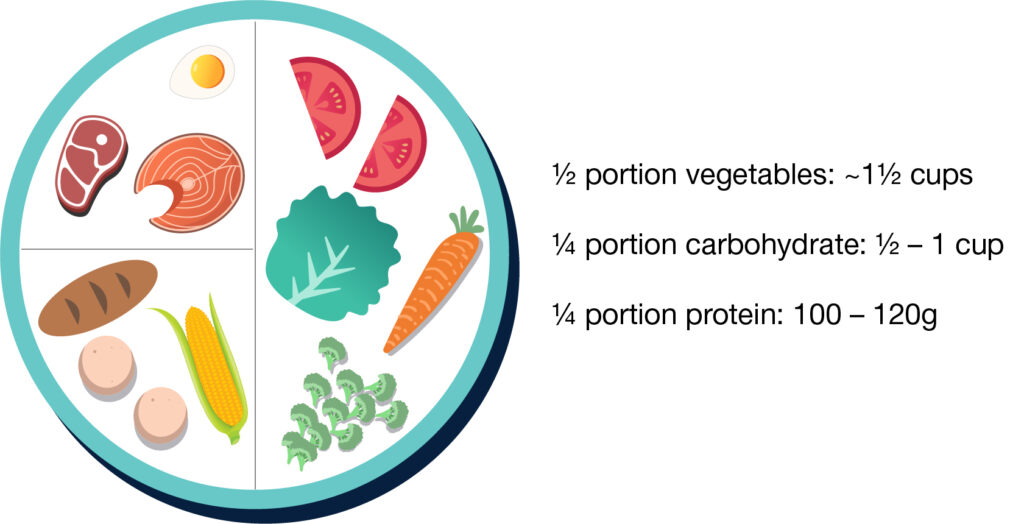Eating right is the key to a healthier life. In India, with its rich variety of foods, spices, and traditional meals, building a balanced and nutritious Indian plate is both achievable and rewarding.
This article will guide you step-by-step on how to create a healthy Indian thali that provides the right mix of carbohydrates, proteins, fats, vitamins, and minerals. Whether you’re vegetarian, non-vegetarian, or vegan, this simple system will help you follow the dietary guidelines for Indians 2024 with ease.
🥦 Why Balanced Eating is Important for Indian Families
A balanced Indian meal supports:
- Daily energy needs
- Better digestion and gut health
- Stable blood sugar and reduced sugar cravings
- Stronger immunity and glowing skin
- Long-term protection against lifestyle diseases like diabetes, obesity, and heart disease
According to the latest ICMR and NIN India dietary guidelines, Indians need to:
- Consume at least 400g vegetables daily
- Eat 100g fruits daily
- Limit salt, sugar, and saturated fat intake
- Increase intake of whole grains, millets, pulses, and seasonal produce

🍽 What a Balanced Indian Plate Should Look Like

Visualize your daily Indian meal plate in four sections. Here’s the perfect structure:
1. Half the Plate – Vegetables and Fruits
Make 50% of your plate colourful with a mix of:
- Leafy greens (spinach, methi, saag)
- Root vegetables (carrot, beetroot, radish)
- Seasonal fruits (papaya, guava, banana)
- Raw salads (cucumber, tomato, onion)
This ensures fiber, antioxidants, and essential micronutrients.
2. One-Quarter – Whole Grains and Healthy Carbs
Choose complex carbohydrates instead of refined grains. Fill 25% of your plate with:
- Brown rice, whole wheat roti
- Millets (jowar, bajra, ragi, foxtail millet)
- Quinoa, dalia, barley
These keep you full longer and help control sugar spikes.
3. One-Quarter – Protein Power
This section helps build muscle, immunity, and supports metabolism. Choose from:
- Pulses (moong, chana, rajma)
- Paneer, tofu, curd, milk (for vegetarians)
- Eggs, fish, chicken (for non-vegetarians)
- Sprouts, soy chunks, dals
4. Small Side – Healthy Fats
Don’t ignore good fats. A teaspoon or two daily of:
- Cold-pressed mustard, groundnut, sesame, or olive oil
- Ghee in moderation
- Almonds, walnuts, flax or chia seeds
Also Read Turn Walls into Gardens: DIY Vertical Gardening Ideas for Small Indian Homes
🍛 Sample Balanced Indian Thalis (Meals)
🥬 Vegetarian Thali
- 2 multigrain rotis
- Moong dal with tadka
- Stir-fried bhindi
- Carrot and cucumber salad
- Buttermilk
🍗 Non-Vegetarian Thali
- Brown rice
- Grilled chicken or fish curry
- Saag or beans sabzi
- Sprouts salad
- Fresh fruit
🧀 High-Protein Vegetarian
- Bajra roti
- Palak paneer
- Kala chana salad
- Tomato raita
- Papaya slices
🧠 Tips to Build a Nutritious Indian Diet Every Day
- Focus on variety—rotate vegetables and grains
- Avoid white rice and maida-based items regularly
- Cook using less oil—prefer steaming, boiling, or roasting
- Use herbs and spices like turmeric, cumin, ginger, and garlic for added benefits
- Drink water or unsweetened buttermilk; avoid sugary drinks
🕒 Balanced Indian Meal Timings
| Meal | Suggested Time | Ideas |
|---|---|---|
| Breakfast | 7–9 AM | Poha with sprouts, upma with veggies |
| Mid-Morning | 10–11 AM | A fruit or soaked nuts |
| Lunch | 12–2 PM | Roti + sabzi + dal + salad + curd |
| Snack | 4–5 PM | Roasted chana or makhana |
| Dinner | 7–8:30 PM | Khichdi + veggies + soup + fruit |
🧾 FAQs: Your Balanced Eating Questions Answered
Q1. Can I follow the Indian balanced plate if I’m diabetic?
Yes. Focus more on fiber-rich vegetables, lean proteins, and low-GI carbs like millets, dalia, and legumes.
Q2. What’s the healthiest oil for Indian cooking?
Use mustard oil, groundnut oil, or cold-pressed coconut oil in moderation. Avoid reheating oil.
Q3. Is ghee good for health?
Ghee is rich in CLA and good fats. Use 1 tsp daily if you’re active and not overweight.
Q4. How can I add more protein to my vegetarian diet?
Include dals, rajma, sprouts, paneer, tofu, soy chunks, nuts, and milk products in every meal.
Q5. Can children eat the same plate?
Yes! Just increase portion sizes based on age. Ensure calcium-rich and iron-rich foods.
🌿 Indian Balanced Plate Guidelines – Quick Summary
✅ 50% vegetables and fruits
✅ 25% whole grains or complex carbs
✅ 25% lean protein
✅ 1–2 tsp of healthy fats
✅ Seasonal, local, fresh produce
✅ Follow latest Indian dietary guidelines 2024
📝 Final Thoughts
You don’t need fancy foods or imported ingredients to eat healthy. A simple Indian balanced thali with sabzi, dal, roti, salad, and fruit can provide all essential nutrients. Focus on variety, moderation, and mindful eating.
By following the Indian Healthy Plate method, you’ll build habits that boost health for your entire family. Start today by rearranging your plate—because every bite counts!
Author-Ayush
